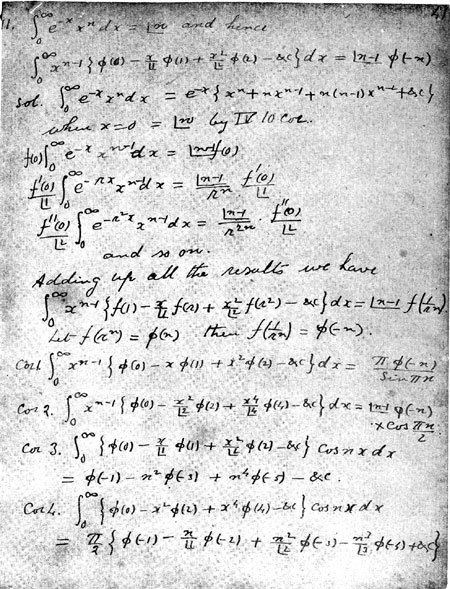 | ||
In mathematics, Ramanujan's master theorem (named after mathematician Srinivasa Ramanujan) is a technique that provides an analytic expression for the Mellin transform of an analytic function.
Contents
- Alternative formalism
- Proof
- Application to Bernoulli polynomials
- Application to the Gamma function
- References
The result is stated as follows:
If a complex-valued function
then the Mellin transform of
where
It was widely used by Ramanujan to calculate definite integrals and infinite series.
Higher-dimensional versions of this theorem also appear in quantum physics (through Feynman diagrams).
A similar result was also obtained by J. W. L. Glaisher.
Alternative formalism
An alternative formulation of Ramanujan's master theorem is as follows:
which gets converted to the above form after substituting
The integral above is convergent for
Proof
The proof of Ramanujan's Master Theorem provided by G. H. Hardy employs the Cauchy's residue theorem and the well-known Mellin inversion theorem.
Application to Bernoulli polynomials
The generating function of the Bernoulli polynomials
These polynomials are given in terms of Hurwitz zeta function:
by
valid for
Application to the Gamma function
Weierstrass's definition of the Gamma function
is equivalent to expression
where
Then applying Ramanujan master theorem we have:
valid for
Special cases of
Mathematica 7 is unable to compute these examples.
